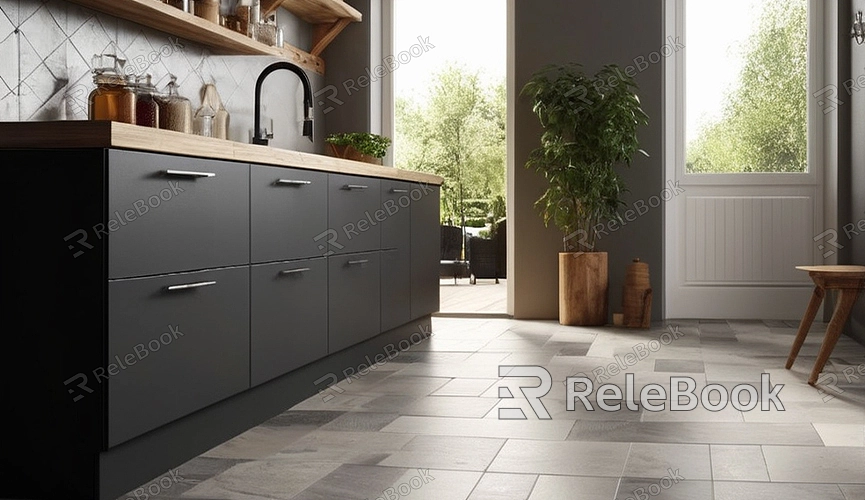Ceramic Tile Texture in Blender
Ceramic tile texture is a design element commonly used to simulate the texture and feel of ceramic tiles' surfaces. Using this texture in Blender can add a vivid appearance to 3D model renderings.
This 3D texture can be downloaded from Relebook and applied to 3D models or scene rendering through the following steps:
1. Model Preparation: Import the model that needs the ceramic tile texture applied into the Blender project.
2. Texture Import: Obtain the ceramic tile texture material, import it into Blender, and apply it to the model's surface.
3. Adjust Mapping: Based on the model's size and shape, adjust the texture mapping to achieve a natural effect on the model's surface.
4. Adjust Material Parameters: Fine-tune the material parameters such as glossiness, reflectivity, etc., to achieve the desired ceramic tile effect.
5. Add Details: Adjust the texture's detail parameters to enhance the texture and gloss of the tile surface, making it more realistic.

Different parameter adjustments yield different rendering effects. Here are common rendering scenarios for this 3D texture in Blender:
1. Interior Decoration: Used to simulate interior surfaces such as floors, walls, etc., adding decorative effects to the space.
2. Architectural Facades: Can be used on exterior walls, roofs, etc., enhancing the architectural visual appeal.
3. Landscape Design: Suitable for outdoor courtyard, garden, etc., pavement scenes, adding naturalness and beauty.
4. Product Design: Applied in product design such as household items, decorations, etc., giving products a unique appearance.
5. Game Scenes: Applied in modeling and rendering game scenes, adding realism to virtual world buildings and ground elements.
Using ceramic tiles texture in Blender significantly enhances the realism and detail level of scenes, especially when simulating indoor and outdoor spaces like kitchens, bathrooms, floors, walls, etc. Ceramic tiles are widely used in architecture and interior design due to their durability, easy maintenance, and aesthetic appeal. Correctly using ceramic tiles texture in 3D modeling and rendering can help create convincing real-world scenes, whether to improve architectural visualization quality, add realism to game environments, or add background elements to animations and visual effects.
1. Increased Realism: The application of ceramic tile texture makes the model surface more realistic, increasing the rendering's lifelikeness.
2. Enhanced Visual Effects: The details and gloss of the tiles make the rendered images more decorative and artistic, enhancing the design's visual effects.
The flexible use of ceramic tile texture in Blender provides a colorful selection for 3D model designs. Through parameter adjustments and application, various unique tile effects can be added to model renderings, not only enhancing the model's visual appeal but also creating more vivid and realistic scene elements for designers. If you need access to high-quality 3D textures and HDRI or 3D model downloads, you can download them directly from Relebook and import the textures and 3D models into your project for immediate use.

